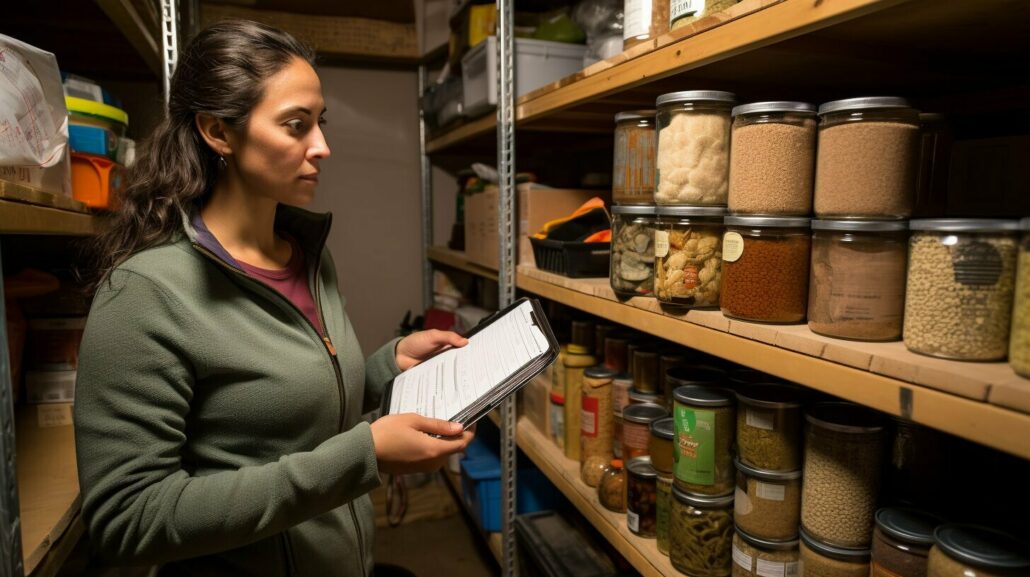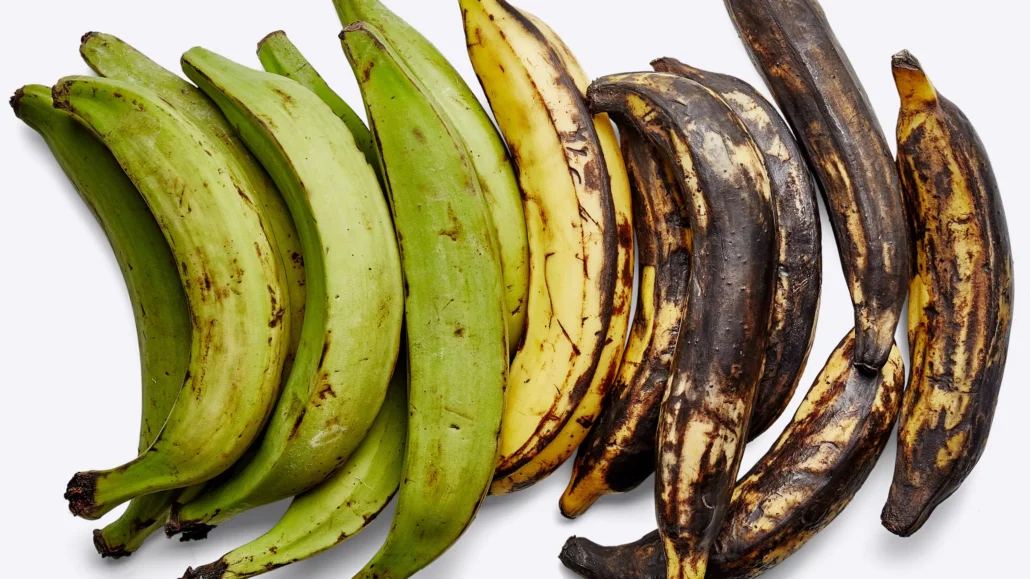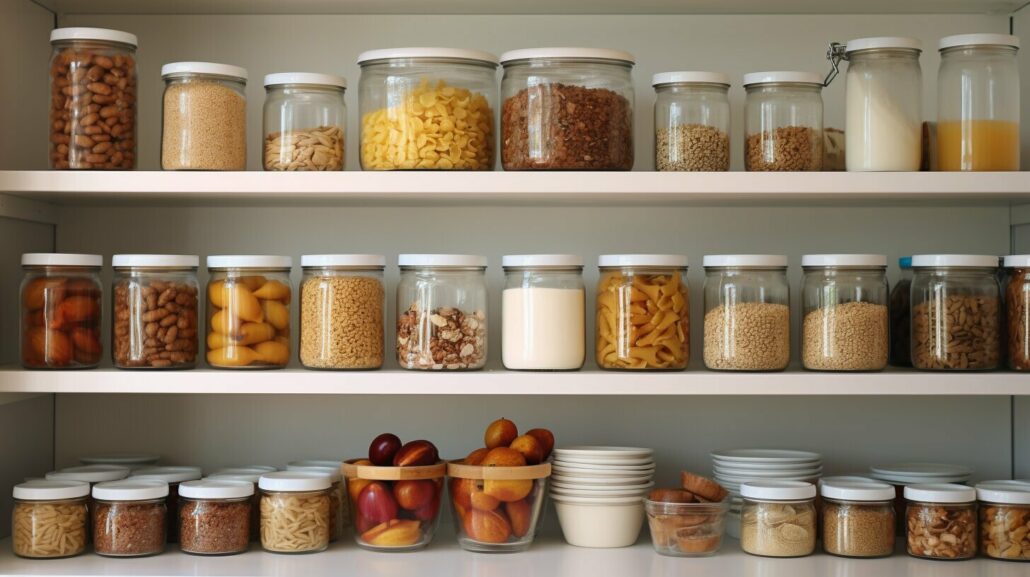When it comes to surviving SHTF situations, proper food planning is essential. In times of crisis, having an adequate supply of food can mean the difference between thriving and merely surviving. But how much food should you store? How do you determine the optimal quantity to sustain yourself and your loved ones during emergencies?
Here, we will provide practical guidance on calculating food needs, storage estimations, and essential considerations for long-term survival. Whether you’re preparing for short-term disruptions or planning for extended periods of self-reliance, this article will equip you with the knowledge needed to create a comprehensive food storage plan.
Key Takeaways:
- Assess your individual risk tolerance and the likelihood of disaster scenarios to determine how much food you should store.
- For short-term disruptions, such as 72-hour kits or car-kits, aim to have 3 days’ worth of food.
- A 30-day supply of food is a good starting point for most emergencies, while a 3-month supply may be necessary for more severe disasters.
- For those aiming for true self-reliance, a 1-year or even 2-year supply of food might be required.
- Consider factors such as shelf life, food variety, and rotation techniques when storing food for longer periods.
By following these key takeaways and implementing the strategies outlined in this article, you can ensure that you and your family are well-prepared to face any SHTF scenario that may come your way.
Understanding Your Food Requirements for Survival
Calculating the right amount of food for survival is crucial in SHTF situations. When it comes to preparing for emergencies, it’s important to consider individual risk tolerance, the likelihood of a disaster scenario, and the duration of potential disruptions. By estimating your food needs, you can better equip yourself to face any situation that may arise.
For short-term disruptions, such as 72-hour kits or car-kits, it is generally recommended to have at least 3 days worth of food. These kits should include non-perishable items that are easy to prepare and provide sufficient nutrition. A selection of canned goods, dried fruits, energy bars, and meal replacement shakes are excellent choices to consider.
When it comes to home storage, a 30-day supply of food is a good starting point for most emergencies. This will provide you with enough sustenance to weather through various situations without relying on outside sources. It’s essential to stock up on foods that are familiar and enjoyable to eat. By learning how to cook from scratch and having a diverse range of ingredients available, you can ensure that your meals are not only nourishing but also comforting during challenging times.
For more severe disasters, such as widespread power outages, natural disasters, or economic crises, a 3-month supply of food may be necessary. In these situations, it’s important to consider factors such as shelf life, food variety, and rotation techniques. Rotating your food stocks ensures freshness and helps meet changing dietary needs. It’s also advisable to learn essential survival skills, such as foraging for wild edibles, growing your own food, and hunting, fishing, or trapping for sustenance. These skills can supplement your food supplies and enhance your chances of long-term survival.
Table: Recommended Food Quantities for Survival
| Food Supply Duration | Recommended Quantity |
|---|---|
| Short-Term (72-hour kits or car-kits) | 3 days worth of food |
| Home Storage | 30-day supply |
| More Severe Disasters | 3-month supply |
| True Self-Reliance | 1-year or 2-year supply |
In conclusion, understanding your food requirements for survival is essential for preparedness. By calculating the right amount of food, considering factors like shelf life and food variety, and acquiring essential survival skills, you can be better equipped to handle any SHTF situation that may arise. Remember, a comprehensive food storage plan and adaptability are key to ensuring long-term survival.
Short-Term Disruptions: 72-Hour Kits and Car-Kits
When facing short-term disruptions, such as natural disasters or unforeseen events, having the right amount of food in 72-hour kits and car-kits is crucial. These kits are designed to provide you with enough sustenance to get through the initial days of an emergency until help arrives or you can secure a stable food supply. Calculating the optimal food quantity for survival in these kits requires careful consideration of several factors, including the number of people in your household, their caloric needs, and the duration of the anticipated disruption.
To ensure you have enough food to sustain yourself and your loved ones during these critical times, it is recommended to store at least 3 days’ worth of non-perishable food items. These can include items such as canned goods, energy bars, dried fruits, and nuts. Consider the dietary preferences and any special dietary needs of your family members when selecting these items. It is also important to regularly check and rotate the food in your 72-hour kits to maintain freshness and nutritional value.
In addition to food, it is essential to include other important items in your 72-hour kits, such as clean water, a first aid kit, a flashlight, and essential medications. Creating a detailed checklist can help ensure you have included all the necessary supplies. Keep the kits easily accessible and in a designated location, such as a pantry or the trunk of your car, so they can be quickly grabbed in the event of an emergency.
Table 1: Recommended 72-Hour Kits Food Supply
| Item | Quantity per person |
|---|---|
| Canned goods (e.g., beans, vegetables) | 3 cans |
| Energy bars or granola bars | 5 bars |
| Dried fruits and nuts | 2 packs or bags |
| Bottled water (8 oz bottles) | 3 bottles |
| Peanut butter or other nut butter | 1 jar or packet |
| Crackers or rice cakes | 1 pack or box |
| Canned tuna or chicken | 2 cans |
| Instant noodles or soups | 2 packs or cups |
By preparing and regularly updating your 72-hour kits and car-kits with the recommended food quantities, you can have peace of mind knowing that you and your family have enough food to sustain yourselves during short-term disruptions. Remember to also consider individual dietary needs, store additional supplies such as water and first aid kits, and remain vigilant in maintaining the freshness and usefulness of your food and other essential items.
Home Storage: Building a 30-Day Emergency Food Supply
To be prepared for most emergencies, it is recommended to have a 30-day supply of food stored at home. This ensures that you and your family will have enough sustenance during times of crisis or when access to food may be limited. Building a 30-day emergency food supply requires careful planning and consideration of factors such as shelf life, food variety, and rotation techniques.
When stocking up on food for emergencies, it is important to focus on non-perishable items that have a long shelf life. Canned goods, dry grains, and dehydrated foods are excellent options as they can last for months or even years when stored properly. Make sure to check expiration dates and rotate your food supply regularly to ensure freshness.
In addition to considering shelf life, it is essential to have a variety of foods in your emergency stockpile. Aim to include a mix of proteins, carbohydrates, fruits, vegetables, and dairy or dairy alternatives. This ensures a well-balanced diet and prevents food fatigue, especially during extended survival situations.
One way to achieve food variety and prevent boredom is by creating a meal plan. This helps you organize your food supply and ensures that you have enough ingredients to prepare meals for the entire month. By mapping out your meals in advance, you can also make use of perishable items first and minimize waste.
| Protein | Carbohydrates | Fruits | Vegetables | Dairy/Dairy Alternatives |
|---|---|---|---|---|
| Canned beans | Rice | Canned peaches | Canned green beans | Powdered milk |
| Tuna | Pasta | Dried apricots | Canned corn | Cheese |
| Peanut butter | Oats | Canned pineapple | Canned tomatoes | Almond milk |
Remember to store your emergency food supply in a cool, dry, and dark location. Avoid areas that are prone to temperature fluctuations or excessive humidity as they can accelerate food spoilage. Regularly check your stockpile for any signs of spoilage or damage, and replace items as needed.
Building a 30-day emergency food supply is an essential step towards preparedness. By considering factors such as shelf life, food variety, and rotation techniques, you can ensure that you and your loved ones have access to nutritious meals during times of uncertainty. It’s better to be prepared and have peace of mind knowing that you can sustain yourself and your family during a crisis.
More Severe Disasters: Preparing a 3-Month Food Supply
In more severe disaster scenarios, having a 3-month food supply becomes essential for long-term survival. When faced with prolonged disruptions, such as natural disasters or societal collapse, it is crucial to have enough food to sustain yourself and your family. By planning ahead and calculating the required food quantities, you can ensure that you are prepared for any unforeseen circumstances.
Creating a 3-month food supply involves careful consideration of several factors. First and foremost, you need to assess your individual risk tolerance and the likelihood of experiencing a severe disaster. This will help you determine the appropriate quantity of food to store. Additionally, you should take into account the potential duration of the emergency. If the situation is expected to last for an extended period, you will need to stock up on enough food to sustain yourself and your loved ones.
When building your 3-month food supply, it is important to focus on food items with long shelf lives. Canned foods, freeze-dried meals, and dehydrated goods are excellent choices as they can withstand the test of time. Remember to rotate your food stocks regularly to maintain freshness and ensure that you are consuming the oldest items first. This practice will also allow you to assess and replenish your supply as needed.
| Factors to Consider for a 3-Month Food Supply: |
|---|
| Individual risk tolerance |
| Potential duration of the emergency |
| Food items with long shelf lives |
| Rotation of food stocks |
Aside from stockpiling food, it is beneficial to learn and develop survival skills that can supplement your food supply. Foraging for wild edibles, growing your own fruits and vegetables, and hunting, fishing, or trapping for sustenance are valuable skills to acquire. These skills not only provide additional food sources but also offer a sense of self-reliance and independence.
To achieve optimal preparedness for more severe disasters, it is recommended to have a comprehensive food storage plan. This plan should consider factors such as shelf life, food variety, rotation techniques, and changing caloric needs. By taking these aspects into account and being proactive in your preparations, you can enhance your chances of survival and resilience in dire situations.
Achieving True Self-Reliance: Preparing for 1-Year or 2-Year Food Supply
For those seeking ultimate self-reliance, preparing a 1-year or even 2-year food supply is a prudent choice. When facing long-term survival situations, it’s essential to have a comprehensive stockpile that can sustain you and your loved ones in times of scarcity and uncertainty.
Building a long-term food supply requires careful planning and consideration. Here are some key factors to keep in mind:
- Calculate the Required Food Quantities: Determine the amount of food needed for each person, taking into account their caloric requirements and dietary needs. Consider factors such as age, gender, activity level, and any medical conditions.
- Shelf Life and Food Variety: Choose foods with long shelf lives, such as canned goods, dried grains, and dehydrated fruits and vegetables. Aim to have a well-rounded selection of food items to ensure a balanced diet and avoid taste fatigue.
- Rotation Techniques: Establish a system for regularly rotating your food supplies to maintain freshness. Use the oldest items first and replace them with fresh supplies. Keeping track of expiration dates and organizing your stockpile will help ensure that nothing goes to waste.
In addition to these considerations, it’s important to learn essential survival skills that can supplement your food supplies. Foraging for wild edibles, growing your own food through gardening, and hunting, fishing, or trapping for sustenance are valuable skills to acquire.
| Factors to Consider | 1-Year Food Supply | 2-Year Food Supply |
|---|---|---|
| Number of Individuals | (Specify) | (Specify) |
| Caloric Requirements per Day | (Specify) | (Specify) |
| Food Variety | (Specify) | (Specify) |
| Long-Term Storage Methods | (Specify) | (Specify) |
By carefully calculating the necessary food quantities, ensuring long shelf life and variety, implementing rotation techniques, and acquiring essential survival skills, you can achieve true self-reliance in the face of extended survival situations. Remember, a comprehensive food storage plan will provide you and your family with the necessary sustenance and peace of mind during challenging times.
Considerations for Long-Term Food Storage
Long-term food storage requires careful considerations to maintain quality and nutrition. When preparing for extended survival situations, it’s essential to focus on shelf life, food variety, and rotation techniques. These factors play a vital role in ensuring that your stored food remains fresh, nutritious, and enjoyable to eat.
To begin, understanding the shelf life of different types of food is crucial. Some food items, such as canned goods or freeze-dried meals, have a longer shelf life and can be stored for several years. Others, like grains or dried beans, may have shorter shelf lives but can still be stored for relatively long periods if stored properly. It’s important to check the expiration dates and rotate your stock accordingly, consuming the oldest items first and replacing them with fresh supplies.
| Food Item | Shelf Life |
|---|---|
| Canned goods | 2-5 years |
| Freeze-dried meals | 20-30 years |
| Grains (such as rice or wheat) | 5-10 years |
| Dried beans and legumes | 2-5 years |
Moreover, having a diverse selection of food is important for maintaining a well-balanced diet during long-term survival situations. Include a variety of proteins, carbohydrates, fruits, vegetables, and fats to ensure you’re getting all the essential nutrients your body needs. Aim for a mix of pantry staples, freeze-dried or dehydrated meals, canned goods, and even home-grown or foraged produce, if possible. This variety will not only provide nutritional benefits but also help keep morale high during challenging times.
A crucial aspect of long-term food storage is rotation. Regularly inspect your stored food items, checking for any signs of spoilage or damage. Create a system where you use and replace your supplies on a regular basis, ensuring that nothing goes to waste and that you’re always well-prepared. Consider labeling your food items with expiration dates or keeping a written inventory to help you stay organized and aware of what needs to be rotated.
Rotation Schedule Example:
- January-March: Use and replace canned goods.
- April-June: Consume and restock freeze-dried meals.
- July-September: Utilize and replenish grains and dried beans.
- October-December: Rotate home-grown or foraged produce.
By following these considerations for long-term food storage, you can ensure that you have a reliable and sustainable food supply during any SHTF scenario. Taking the time to plan, organize, and maintain your food storage will provide you and your loved ones with peace of mind and increased chances of surviving and thriving in times of uncertainty.
Adapting to Changing Caloric Needs and Dietary Requirements
In SHTF scenarios, it is crucial to adapt your food supplies to meet changing caloric needs and dietary requirements. As the situation evolves and physical exertion increases, your body will demand more energy to sustain itself. Therefore, it’s important to have a stockpile of food that can adequately meet these heightened demands.
When planning for long-term survival, it’s recommended to include high-calorie, nutrient-dense foods in your emergency food supply. These foods can provide the energy and essential nutrients needed to keep you going in challenging situations. Stocking up on items such as nuts, seeds, dried fruits, and protein-rich foods like beans and canned meats can help meet your increased caloric intake needs.
It’s also essential to consider dietary requirements and personal preferences when preparing your food storage. If you have any specific dietary restrictions or food allergies, ensure that your emergency food supply includes suitable alternatives. Additionally, including foods that you enjoy eating and are familiar with can boost morale during stressful times.
As part of your comprehensive food storage plan, regularly evaluate and rotate your food stocks to ensure freshness and maintain optimal nutrition. This involves using the oldest items from your storage first and replacing them with new purchases. By implementing a rotation system, you can minimize waste and ensure that your food supply remains viable for an extended period of time.
| Food Group | Recommended Quantity (per person, per day) |
|---|---|
| Grains and Cereals | 2-3 servings |
| Fruits and Vegetables | 2-3 servings |
| Protein (meat, beans, nuts) | 2-3 servings |
| Dairy (or suitable alternatives) | 1-2 servings |
| Fats and Oils | 1-2 servings |
| Sweets and Treats | Occasional indulgence |
Remember, survival situations can be stressful, so having a varied and balanced diet is crucial for overall well-being. While it may not be possible to maintain a perfect dietary balance in extreme circumstances, strive to include a mix of food groups in your storage to provide as much nourishment as possible.
By adapting your food supplies to meet changing caloric needs and dietary requirements, you can better ensure your long-term survival in SHTF situations. With careful planning, regular evaluation, and a well-rounded food storage plan, you can be prepared to face any emergency scenario that comes your way.
Essential Survival Skills: Foraging, Growing, and Hunting
Acquiring essential survival skills is vital for securing additional food sources in SHTF situations. When traditional food supplies are limited or inaccessible, knowing how to forage for wild edibles, grow your own food, and hunt, fish, or trap for sustenance can ensure your survival. These skills provide alternative means of procuring food and increase self-reliance in long-term survival scenarios.
Foraging: Foraging involves identifying and gathering edible plants, berries, nuts, and mushrooms from the wild. It is crucial to learn how to differentiate between safe and poisonous plants and to understand the seasons and habitats where these wild edibles can be found. By studying local flora, you can identify nutritious and readily available sources of food in your area.
Growing: Growing your own food provides a sustainable source of nutrition during long-term survival situations. Whether you have access to a small backyard or a rooftop garden, cultivating fruits, vegetables, and herbs can significantly supplement your food supplies. Learning the basics of gardening, such as seed selection, soil preparation, and pest control, will enable you to produce fresh and nutritious food year-round.
Hunting, Fishing, and Trapping: Developing skills in hunting, fishing, or trapping allows you to procure protein-rich sustenance from the land and water. Knowing how to set traps, handle firearms, and practice ethical hunting techniques are essential for success. Understanding local hunting regulations and obtaining the necessary licenses are also crucial for legal and responsible foraging of wildlife.
| Essential Survival Skills | Benefits |
|---|---|
| Foraging | – Provides access to wild edibles – Increases knowledge of local flora – Expands food diversity |
| Growing | – Creates a sustainable food source – Allows control over food quality – Provides fresh produce year-round |
| Hunting, Fishing, and Trapping | – Procures protein-rich food – Enhances self-reliance – Builds wilderness survival skills |
Incorporating these skills into your preparedness plan not only provides independence in obtaining food but also diversifies your diet and improves your overall chances of survival. It is important to remember that these skills require continuous practice and adaptation to changing environments. By mastering these survival techniques, you can ensure a more robust and sustainable food supply, increasing your chances of long-term survival in SHTF situations.
The Comprehensive Food Storage Plan for Long-Term Survival
Creating a comprehensive food storage plan is vital to ensure long-term survival in any SHTF situation. When preparing for emergencies, it’s important to consider factors such as individual risk tolerance, the likelihood of disaster scenarios, and the duration of potential disruptions. By calculating your food needs and storage estimations, you can better prepare yourself and your loved ones for the challenges that may lie ahead.
For short-term disruptions, such as 72-hour kits or car-kits, it is generally recommended to have a 3-day supply of food. This ensures that you have enough sustenance to weather immediate emergencies. However, for longer-term survival, it is advisable to build a more extensive food stockpile.
A good starting point for most emergencies is a 30-day food supply for home storage. This allows you to sustain yourself and your family for a month in case of extended disruptions. In more severe disasters, such as natural catastrophes or societal upheavals, a 3-month food supply may be necessary to navigate through the challenges and uncertainties that may arise.
For those who desire true self-reliance, a 1-year or even 2-year food supply may be required. When considering long-term food storage, it is important to take into account factors such as shelf life, food variety, and rotation techniques. Ensuring a well-balanced diet with familiar and enjoyable foods is crucial for maintaining morale and overall well-being. Rotating food stocks regularly ensures freshness and helps meet changing dietary needs. Additionally, learning essential survival skills like foraging for wild edibles, growing your own food, and hunting, fishing, or trapping can supplement your stored supplies and increase your chances of long-term survival.
Remember, a comprehensive food storage plan is not only about stockpiling food; it’s about being prepared physically, mentally, and emotionally for any SHTF scenario. By taking the time to plan and evaluate your food needs, you can face the unknown with confidence, knowing that you have taken the necessary steps to ensure the well-being and survival of yourself and your loved ones.
FAQ
Q: How much food should I store for survival in SHTF situations?
A: The amount of food to store depends on individual risk tolerance and the likelihood of a disaster scenario. For short-term disruptions, it is generally recommended to have 3 days worth of food in 72-hour kits or car-kits. For home storage, a 30-day supply is a good starting point for most emergencies, while a 3-month supply may be necessary for more severe disasters. For those who want to be truly self-reliant, a 1-year or even 2-year supply of food may be required.
Q: What factors should I consider when storing food for longer periods?
A: When storing food for longer periods, it is important to consider factors such as shelf life, food variety, and rotation techniques. Ensuring that the food you store has a long shelf life and is properly rotated to maintain freshness and nutrition is crucial. Additionally, stocking up on foods that are familiar and enjoyable to eat will help maintain morale and well-being during survival situations.
Q: How should I manage my food stocks to ensure freshness?
A: It is advisable to rotate your food stocks regularly to ensure freshness and to meet changing dietary needs. This means using the oldest foods first and replacing them with new stock. By practicing proper rotation techniques, you can maintain a supply of fresh and nutritious food for any SHTF scenario that may arise.
Q: Should I consider increasing my food supply if physical exertion is required during a survival situation?
A: Yes, in a SHTF scenario where physical exertion is required, your calorie needs may increase. It is important to take this into account when planning your food supply. Consider including high-calorie foods and calculating your calorie requirements based on the physical demands you may face.
Q: What are some essential survival skills to supplement food supplies?
A: In addition to storing food, it is beneficial to learn skills such as foraging for wild edibles, growing your own food, and hunting, fishing, or trapping for sustenance. These skills can supplement your food supplies and provide additional sources of nourishment in a long-term survival situation.
Q: How important is a comprehensive food storage plan for long-term survival?
A: A comprehensive food storage plan is necessary to be prepared for long-term survival situations. It ensures that you have an adequate supply of food, taking into account factors such as risk tolerance, disaster likelihood, and duration. By planning ahead, considering rotation techniques, and acquiring essential survival skills, you increase your chances of successfully navigating any SHTF scenario.










